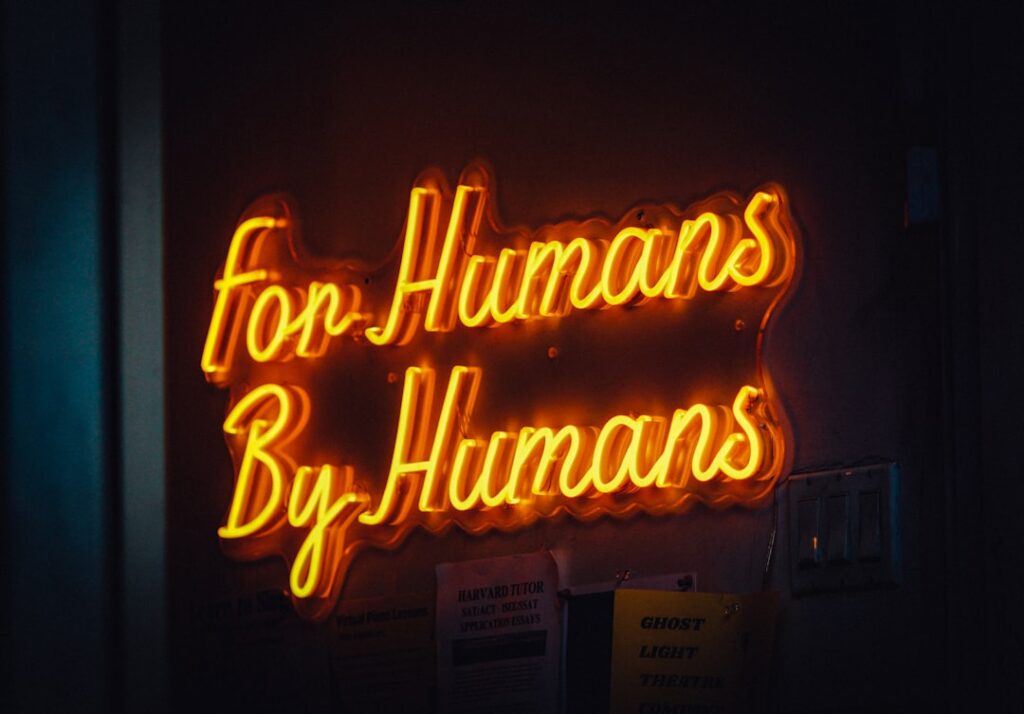## The Human Touch in Tech: Why Your Testing Workflow Needs a Personality Transplant
Ever download an app that felt like a warm hug from a friend? Then tried another that made you feel like you’re arguing with a stubborn vending machine? I’ve been there too. That difference often comes down to testing. We’ve gotten so obsessed with chasing bugs that we sometimes squeeze the soul right out of our software. But what if testing could understand people instead of just poking at pixels? That’s where a test humanization workflow comes in.
This isn’t just about preventing crashes—it’s about preventing that subtle sigh of frustration when your user thinks, “Why is this so needlessly complicated?” Forget robotic checklists. We’re talking about weaving empathy, real-world chaos, and human nuance into every test. Ready to build products people actually love? Let’s dig in.
[IMAGE_1: Illustration showing a robotic arm testing a phone vs. a diverse group of people using the same phone with smiles]
—
### What Exactly is a Test Humanization Workflow? (No Jargon, Promise!)
A test humanization workflow is simply this: baking genuine human understanding into every stage of testing. It shifts the focus from “Does this button work?” to “Does using this button feel intuitive, satisfying, and respectful?“
Think about it: humans aren’t robots. We bring quirks, emotions, distractions, and unique perspectives to everything we touch. Ever tried using a food delivery app while wrangling a toddler? That’s the messy reality a test humanization workflow embraces. Its goal? To build software that doesn’t just function—it connects.
—
### Why “Robot Mode” Testing Sabotages Your Product
Automated scripts have their place, but relying only on them is like taste-testing soup with a thermometer. You’ll know it’s hot, but not if it’s delicious. Here’s where purely technical testing fails us:
– Misses the Feels™: Algorithms can’t measure frustration or delight. They see a click; they don’t see the user muttering “Ugh, not AGAIN!”
– Ignores Real Life: Perfect lab conditions? Please. Users deal with spotty Wi-Fi, screaming kids, and multitasking chaos.
– Accessibility Blind Spots: Passing WCAG checkmarks ≠ a smooth experience for a screen reader user.
– The “Mirror Effect”: Homogenous testing teams miss cultural, age, or ability-based friction.
—
### Why Humanizing Testing Isn’t Optional Anymore
Let’s be honest: users ditch apps over tiny frustrations. When every competitor is a click away, emotional resonance is your secret weapon. A test humanization workflow fuels:
– ❤️ Loyalty: Smooth experiences = returning users.
– 🌟 Reputation: Empathetic software builds trust; clunky software breeds bad reviews.
– 💸 Lower Support Costs: Fixing UX issues pre-launch is cheaper than firefighting complaints later.
– 🔍 Smarter Features: Real human insights reveal what people truly need (not what we think they need).
—
### Building Blocks: Your Human-Centered Testing Toolkit
Don’t ditch automation—enhance it. Here’s how:
#### 1. Design Tests Like a Human, Not a Machine
– Personas with Pulse: Create tests for “Maria, the nurse working night shifts,” not “User 7B.” Map her emotional highs and lows.
– “Human-Centric” Goals: Beyond “Login succeeds,” track goals like “First-time user feels confident after onboarding.”
– Follow the Feels: Prioritize testing emotionally charged moments: signup, payment, error recovery.
#### 2. Train Testers to Be Empathy Ninjas
– Spot the Sigh: Teach testers to notice frowns, hesitation, or relieved exhales during sessions.
– Rate the Rage: Ask testers: “On a scale of 1-5, how annoyed were you by this step?”
– Test Error Messages for Empathy: Does yours say “Invalid input” or “Whoops! Double-check your card number?”
[IMAGE_2: Photo of a diverse group laughing during a usability test]
#### 3. Embrace the Beautiful Mess of Real Life
– Get Out of the Lab: Test in coffee shops, buses, or a chaotic living room.
– Chaos Mode: Simulate interruptions—texts, calls, network drops—during critical tasks.
– Test the “Slow & Old”: Try budget phones on 3G speeds. That’s reality for millions.
#### 4. Test for ALL Humans
– Diversify Ruthlessly: Recruit testers of varying ages, abilities, cultures, and tech skills.
– Go Beyond Compliance: Using a screen reader shouldn’t feel like solving a puzzle. Test the experience.
– Inclusion by Design: Use checklists like Microsoft’s Inclusive Toolkit to catch hidden biases.
—
### Your Action Plan: Making Humanization Real
Ready to stop talking and start doing?
1. Audit Your Blind Spots: Where does testing feel robotic? Ask support teams for common user frustrations.
2. Set Human Goals: Aim for “20% fewer frustrated support tickets” or “15% faster checkout for seniors.”
3. Weave Humanity into Your Flow:
– PLAN: Use personas to write scenarios.
– TEST: Blend automation with exploratory “empathy sessions.”
– REPORT: Include quotes like “User sighed loudly at step 3.”
4. Equip Your Team: Train testers in observation skills and inclusive practices.
5. Tools That Help (Not Replace):
– Usability platforms (UserTesting)
– Crowdtesting (Testlio)
– Ethical session recordings (Hotjar)
– Real human+screen reader testing
[IMAGE_3: Flowchart showing humanized steps integrated into a traditional testing process]
—
### Overcoming Roadblocks: Real Talk
Heard these objections? Here’s your rebuttal:
– “Too Time-Consuming!” → Start with ONE critical user journey. Test with 5 real people remotely.
– “How Do You Measure Feelings?” → Pair metrics (task time) with surveys (“How annoyed were you?”). Track trends.
– “Our Testers Aren’t Therapists!” → Train them! A 1-hour workshop on observation changes everything.
– “Management Only Cares About Speed!” → Speak their language: “Fixing this flow pre-launch will save $25k in support costs.”
—
### Measuring What Truly Matters
Ditch “bug count” vanity metrics. Track:
– 😊 User Sentiment (NPS, app store review analysis)
– ⏱️ Task Success Rates (especially for beginners)
– 🔁 Recovery Speed from errors
– ♿ Accessibility Usability (task success for AT users)
– 📉 Support Tickets About Confusion (track the decrease!)
—
### The Bottom Line: Humanity Wins
Software isn’t used by spreadsheets—it’s used by people. A test humanization workflow bridges the gap between “technically functional” and “joyfully usable.” It’s not fluff; it’s the future of competitive, ethical tech.
Your challenge this week? Pick ONE user journey in your app. Watch a real human navigate it. Listen to their sighs, watch their hesitations. Then ask: “How can our testing catch this next time?”*
> “Empathy isn’t a ‘phase’—it’s the lens we test through.”
Ready to humanize? Start small. Share your biggest “aha!” moment below!
—
### FAQ: Keeping It Real
Q: How is this different from usability testing?
A: Usability testing is one slice of the pie. Humanization means baking empathy, diversity, and real-world mess into your entire process—from planning to reporting.
Q: Can automation play a role?
A: Absolutely! Automation handles repetitive checks. Humans tackle emotion, nuance, and “Would my grandma panic here?“
Q: What if we’re a tiny team?
A: Test ONE critical flow with 3 users. Use free tools like Zoom recordings. Small steps = big mindset shifts.
Q: Does this replace accessibility scanners?
A: No—it complements them. Scanners find technical issues; humans ensure screen readers feel smooth, not just compliant.
Q: How do I sell this to my boss?
A: Lead with ROI: “This cuts post-launch fire drills by 30%.” Share horror stories from competitors who ignored UX.


